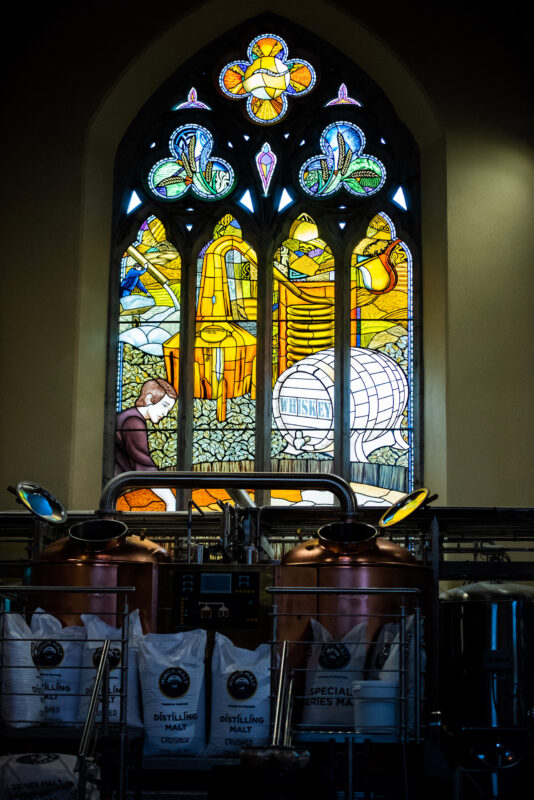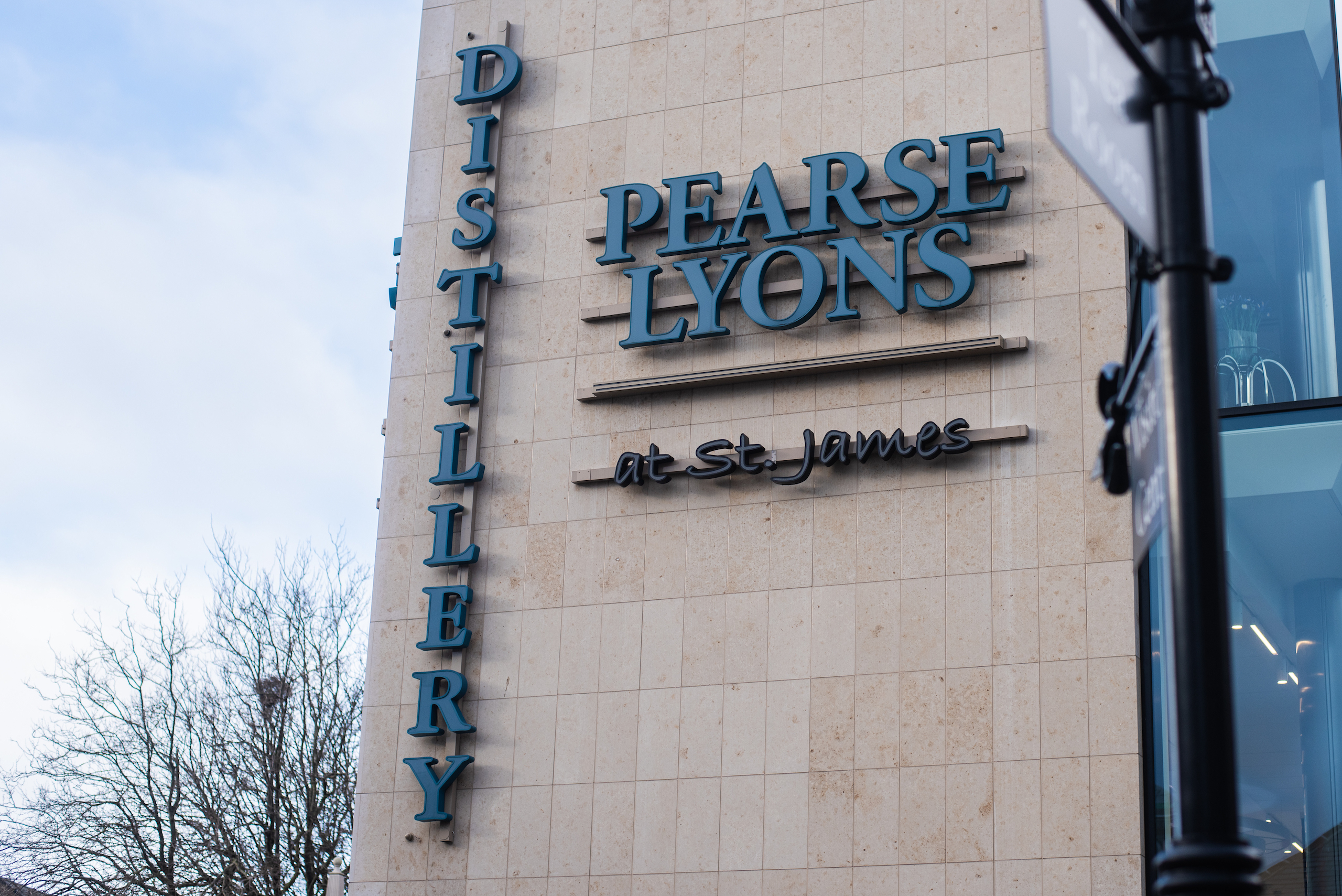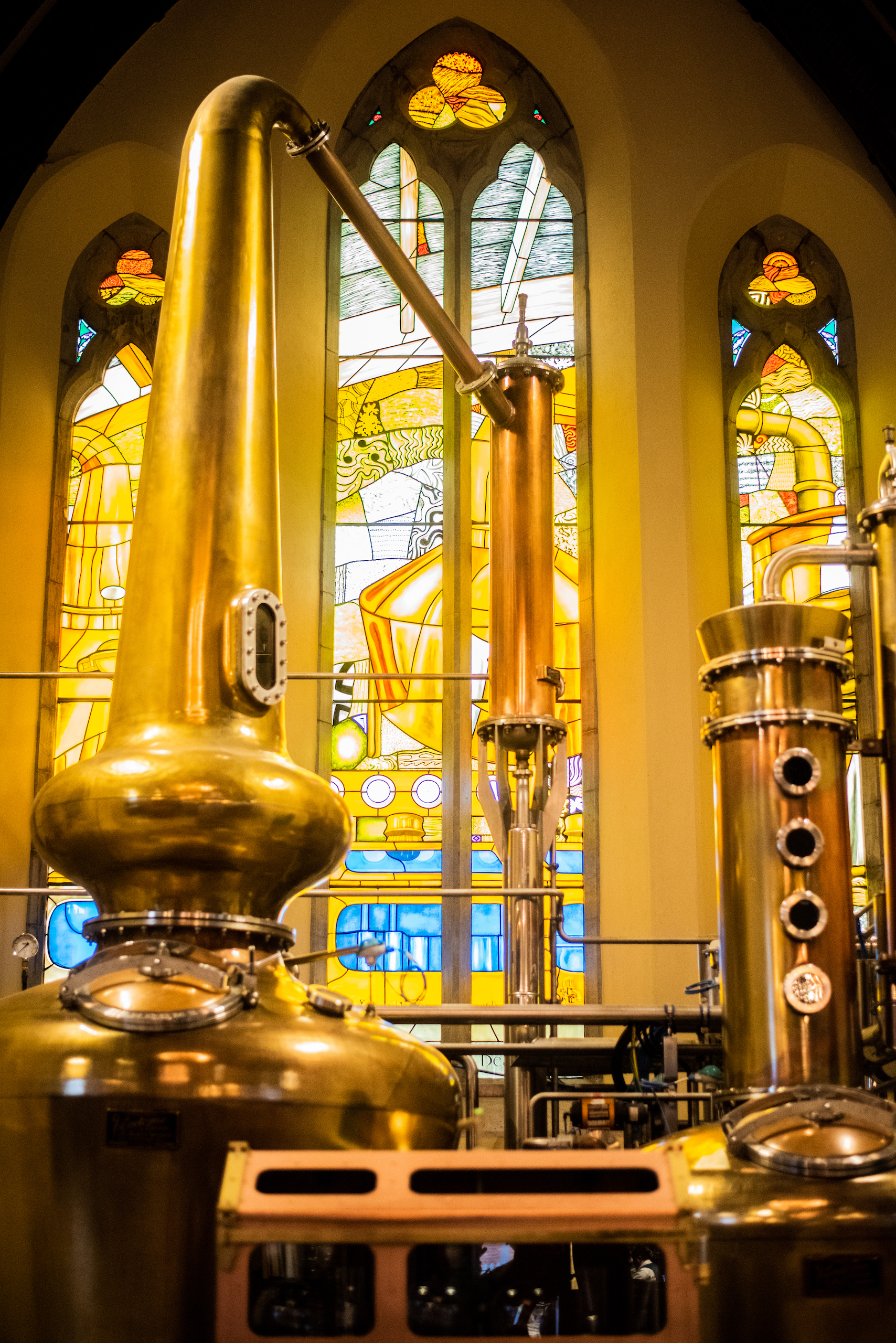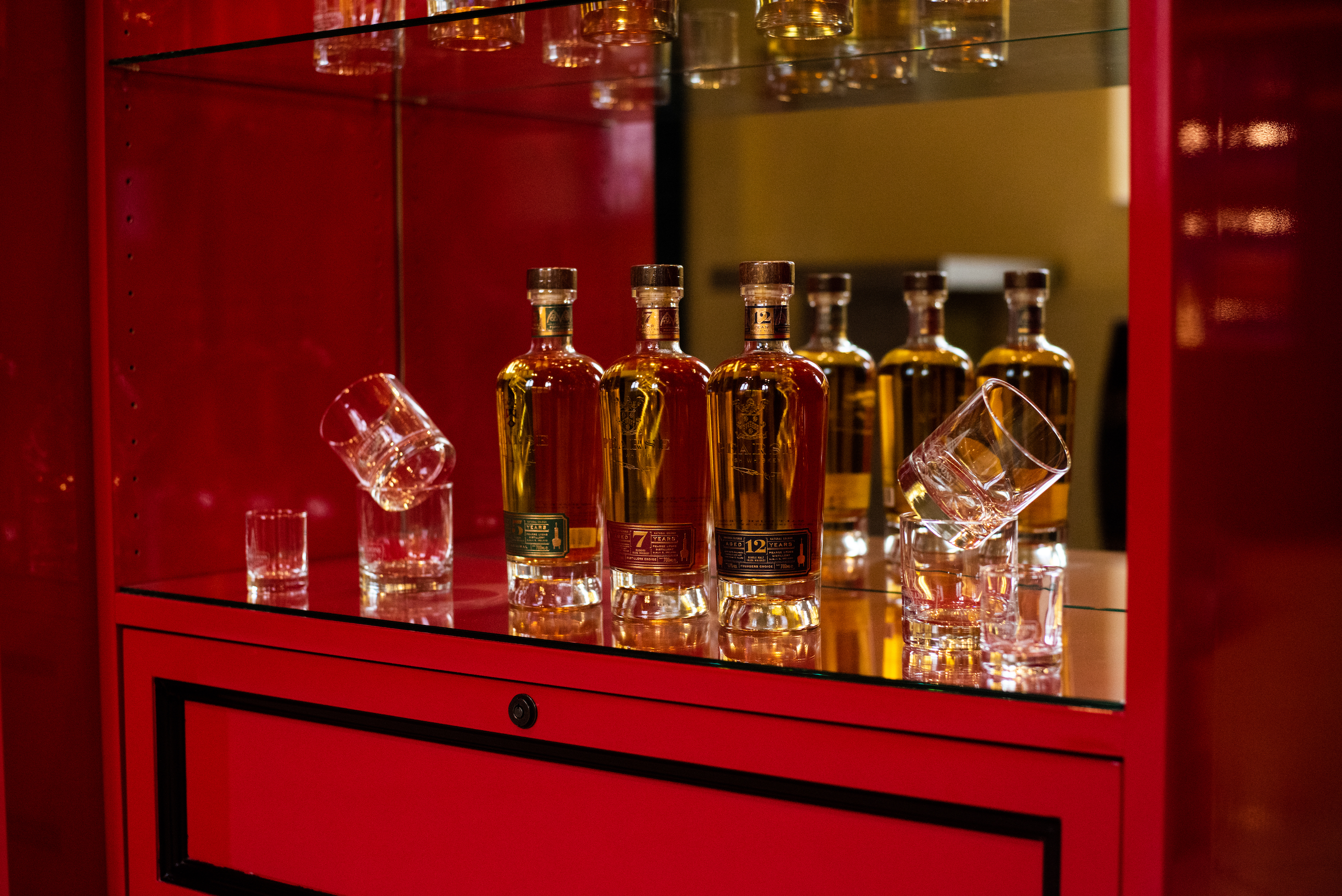Every 10 years or so, a different drink becomes the new darling of the market. It seems to pop up everywhere you look without any warning and takes pubs and restaurants by storm. In America, the most recent case of this cycle of popularity has been the rise of spiked seltzer water, in the forms of Truly and White Claw, and so on.
But not every drink that experiences this cycle of popularity is a new one – many have been around for decades, or even centuries. Currently, gin seems to have a stranglehold on the market. Pink gins, gin infusions and gin and tonics in cans seem to be all the rage. But the same could have been said for Scotch before the gin craze. So, if there is to be an expiration date on gin’s popularity, what comes after?
In some ways, it seems ridiculous to suggest that Irish whiskey will be the next big craze. After all, whiskeys like Jameson and Bushmills have never really gone out of style, have they? But even a cursory industry analysis reveals that something is happening in Ireland. Smaller, bespoke distilleries are finally beginning to see a surge in demand and are able to sell to a wider audience. The oversaturation of blended whiskeys produced en masse is creating a thirst for small-batch, high quality whiskeys. In this way, it is emulative of the “farm to table” model of produce purchasing.
But why now? Why has this apparent renaissance in independent distilleries come at this point in time, as opposed to two years ago or even two years from now? The answer is deceptively simple: with many smaller distilleries only now beginning to release their brands, it would make sense that an uptick in whiskey sales has been recorded, and will likely continue into the future.
To accurately predict the future of Irish whiskey, however, we also need to look at the past, and examine how we’ve gotten to this point. We won’t go all the way back in time to when Irish whiskey, or uisce bheatha, first came into existence, nor will we examine the historical, and often political, openings of distilleries over the centuries. Instead, we will simply look at the sharp fall in consumption.
Smaller, bespoke distilleries are finally beginning to see a surge in demand and are able to sell to a wider audience
In the 19th century, Irish whiskey was one of the (if not the) most widely consumed liquor in the world. It had become part of a national and diasporic identity of the Irish, for better or worse. But it wasn’t simply a calling card for a non-existent nation. Due to Ireland’s more agrarian nature, industry was not nearly at the level it was in the rest of the UK. As a result, while England became a centre for coal mining and Belfast for shipbuilding, Dublin’s main exports came from brewing and distilling. At one point in time, Ireland boasted over 30 distilleries across the island.
This all changed, however – and for a number of reasons. One was the introduction of blended whiskeys – which, involving mixing whiskeys from various distilleries to create a new brand, showed the inability of Irish distillers to adapt to changing tastes. But the difficulties faced by Irish whiskey were not only internal: a number of external factors played into the decline as well, not least of which were two bitter conflicts engulfing the island.
Following the Irish War of Independence, and the civil war that followed, a trade war between the UK and Ireland stopped all export of Irish whiskey to Britain and the Commonwealth, its largest export partner. Then, almost immediately, prohibition in the US blocked off the second largest importer of Irish whiskey. These international hurdles, as well as protectionist trade policies implemented by the Free State, forced many distilleries out of business. By the early 20th century, Scotland was the premier whiskey producer in the world. What had been 28 distilleries in 1887 became, to all intents and purposes, two by the mid-1970s.
But during the 1980s, Irish whiskey saw the beginnings of a long, if slow, resurgence. New distilleries began operating and advertising overseas. Jameson, in particular, expanded its operations after Pernod Ricard’s takeover of Irish Distilleries. For the past 20 years, Irish whiskey has become the fastest-growing spirit in the world, with annual sales increases of between 15 and 20 per cent.

During the 1980s, Irish whiskey saw the beginnings of a long, if slow, resurgence.
Yet most of this increase was due to the “big players” – Jameson, Bushmills and Tullamore – of Irish whiskey. There is an oligopoly of sorts when it comes to Irish whiskey and its production. James Doherty, of Sliabh Liag distillery in Donegal, believes that these big players make up “90 per cent of the category. The rest of the players are all within 10 per cent”. Doherty says this feature of Irish whiskey sets it apart from Scotch, for instance, where “50 per cent of the whiskeys available are not from the major players”. This significant difference in the market share available to newcomers is challenging for new Irish whiskey distilleries.
This oligopoly isn’t all bad, though, Doherty says. “The big guys have been very helpful from a technical perspective. The IWA [Irish Whiskey Association], and the way they’re structured really helps out smaller distilleries.” But this technical help doesn’t come without concerns. “The big guys are stepping into the craft realm. Whether they’re kinda ‘shelf defending’, the jury’s still out on that.” Shelf defending, as the name implies, means retaining shelf space in stores by offering more range from the same brand.
Ultimately, Doherty says, “the consumers trust that brand, and rightly so”. But the future is up for grabs. Doherty would like to see a certain amount of consideration when examining possible space for new whiskeys, but he’s positive, he tells me, that “that will come. I think it’s just a matter of time”. He cites the concept of the circular pattern, in which one brand dominated the single malt whiskey market in the 1960s. Now? It makes up “less than 20 per cent of the category and the category is enormous”.
But the competition between large and small has been beneficial for both sides, Tracey Flinter, the general manager of Pearse Lyons Distillery, tells me. For Flinter, with more small distilleries entering into the fray, the large players have been forced to be increasingly innovative in what they produce. “With so many smaller players coming on board that are so innovative and very unique with their styles, they’ve made the larger players think and look at it from a craft production perspective rather than a general whiskey production perspective.”
The big guys are stepping into the craft realm. Whether they’re kinda ‘shelf defending’, the jury’s still out on that
She adds, though, that innovation and creativity seem to be easier for companies and groups that produce small batches. “It’s probably easier for the smaller guys to experiment and turn things around quickly than it is compared to the larger guys”, Flinter says. This, she says, means that “the smaller guys can definitely compete with the larger players”.
But there’s another glaring issue facing all fledgling whiskey distilleries. It’s the elephant in the room, and not a nice thought for upstarts, but it needs to be tackled from the beginning: finances.
Whiskey has to be aged for it to be whiskey. It’s a defining characteristic of the spirit. And any good whiskey has been aged for years and years. This is dangerous, because “the capital cost is one thing, but it’s the running cost on an annual basis that you’re then not selling anything for,” Elliot Hughes, the business development director for Dingle Distilleries, tells me.
“It’s a big investment in an industry that doesn’t offer a lot of returns for a number of years. That’s the nature of the business.” It is particularly difficult for many of the smaller distilleries that are now producing because their origins stretch back to when the financial crisis had just begun to die down. Investment in anything in Ireland was a dangerous game – not least in an industry that did not yield returns immediately.

Smaller firms like Pearse Lyons Distillery have forced larger players to re-evaluate their sales and production methods.
Distilleries combatted these obstacles in a number of ways. Many produced gin and vodka while the whiskey was maturing, in an attempt to generate at least some cash flow for the distillery in the short-term. This was possible because the general alcohol that whiskey eventually becomes after aging in a barrel also produces vodka and gin in a significantly shorter amount of time. In addition to helping generate income, gin and vodka sales also helped promote the brand. “The gin has helped bring the whiskey to a lot more people and has helped people hear about us”, Hughes says. However, he says, this doesn’t detract from the drive to deliver good Irish whiskey. “So, as much as people go mad about gin, whiskey is still bigger.”
But gin isn’t necessarily the perfect solution, Doherty says: “I’ve kind of warned people off that because the gin category is massively competitive.” He adds that people setting up gin businesses ” still have to do all the work of establishing distributors and going bar to bar to sell the product. The idea that it’s easy money is just not there”.
Doherty and his distillery have opted for vodka instead of gin, but it’s not only a financial move. Vodka tops the list when it comes to the most-consumed spirit, but for Doherty, the production of vodka isn’t simply a move to offset costs – his company wants to create something in the north-west of Ireland that had not previously been there. “It’s not something where we’re trying to take on Grey Goose, but it’s something we’re proud of in the north-west.”
Dingle Distilleries, on the other hand, elected to sell gin to manage its operating costs. To cover the initial capital costs of the distillery, the company also introduced the “Founding Fathers” scheme, in which investors helped jump-start the construction and production of the distillery. Even with this initial investment, though, Hughes says that “we’re probably doing it on the cheap. We’re in a blue tin shed. We didn’t build a nice fancy building. But now in the next two to three years, we’re thinking of doing that, because we’re in a position to finance that”.
With so many smaller players coming on board that are so innovative and very unique with their styles, they’ve made the larger players think
Producing alternative, cost-offsetting spirits and enticing investors are only two ways in which funds can be raised to create and maintain a distillery. In some cases, as evidenced by the Pearse Lyons distillery in the Liberties, it is the passion and vision of a single individual or family – profits be damned. “The passion that was put behind this project, nothing was going to stop them [Pearse and Deirdre Lyons]. They found this property in 2013, they thought it was absolutely beautiful and they said: ‘Let’s put a whiskey distillery in here.’ The site at the moment costs about €28 million and I do believe if someone else had taken on the project or if it was private investors, the project would not have been finished”, Flinter says.
The distillery, housed in an old church, is incredibly impressive. The site itself could easily be seen as a metaphor of the Irish whiskey industry as a whole. What was once impressive and central in a community had been left to waste away to time – until a group of people passionate about the project breathed life back into it. In both the restoration of the old church and the restoration of the Irish whiskey market, great care has been taken to ensure that it has been done properly. As such, the site of the Pearse Lyons distillery has generated significant tourist attention, particularly due to its location in central Dublin. This, it’s clear, opens up a potential boon for increased whiskey production in Ireland.
“I do think it’s [tourism based around whiskey] a positive for Ireland, as we will be seen as a whiskey destination. I know Scotland is on the map as being a Scotch destination, so a lot of people go there just to do the distillery trail. I’m just thinking of the Bourbon Trail as well in the US,” Flinter says, drawing connections to the two other largest whisky producers in the world. “I think it’s great for tourism. In these small pockets of Ireland, it will bring people to them to see how this craft is produced and distilled.”

Pearse Lyons Distillery, housed in an old church, could easily be seen as a metaphor of the Irish whiskey industry as a whole.
As successful as the Wild Atlantic Way has been for tourism in Ireland, Flinter hopes this idea can extend to distilleries as well. “We’re in talks at the moment with the Irish Whiskey Association about developing a tourism trail in Ireland. We’ve already developed a map: it’s called Irish Whiskey 360, and the idea is you do a 360 of the island to give you a greater insight into each business and what each distillery does. I suppose it’s up to us to promote it as a sustainable product, but also make sure people are drinking responsibly as well. So yeah, there’s a lot of opportunity there.”
An intriguing point is that the bulk of Irish whiskey from smaller distillers would likely go to international crowds. “The amount of whiskey we put into the Irish market at the moment is probably not gonna be far off from five years time. Whereas the growth we see in other markets, the United States or in Asia, is probably the big driver of Irish whiskey at the moment,” Hughes tells me.
The rationale for this simply comes down to quality, and its adverse relationship with quantity. “What Jameson does in a day, we can’t manage in a year. We are acutely aware of where we are, but also where we need to be”, says Hughes. But this, he adds, is not necessarily a bad thing, particularly when your brand is a bespoke whiskey distillery.
“We thought, let’s cherish the fact that we [produce] four casks a day, that everything is handmade. Everything that is produced on site. Everything needs to be premium. To get the consumer to pay a premium price, everything needs to be premium.”
It’s a big investment in an industry that doesn’t offer a lot of returns for a number of years. That’s the nature of the business
It is hard to deny that Irish whiskey is on the rise, both at the macro and micro level of the industry. More whiskey is being produced and more distilleries are opening up to produce it. But is this simply a temporary increase in demand, or can it be sustained for years to come? Will it be the next fad, like gin and tonics in a fishbowl glass, or will Irish whiskey return to supremacy in the spirits market?
Ultimately, according to Doherty, it’s too soon to say. “I think the word renaissance was used as soon as there were two new distilleries. The renaissance is only just starting now. I think the word renaissance was used a bit too early in the game.” Why, then, is the renaissance only starting now, not when the first distilleries opened? “Those early distilleries all started to release liquids, get products out there – they came to market. And even those ones are in their formative years. You’re not sure if this is the definitive style from this distillery yet. They’re releasing things to let you know what they’re doing, that they are functioning, that they’re maturing, but they’re not clear yet on that signature style.”

In many ways, small distilleries are paving the way for a new, improved and exciting Irish whiskey market.
Generally, it seems that the trajectory is an upward one for Irish whiskey. It is important to remember, though, that “these stats are a bit misleading, because they’re all dominated by Jameson”, Hughes cautions. “And that’s great for Irish distillers, but from a smaller perspective, there is a bit of disconnect. People see that: ‘Oh, Irish whiskey sales have gone up by 40 per cent, therefore our sales should be going up by 40 per cent.’ What’s happening is that the base value whiskeys, such as Jameson, are exploding.” That being said, Hughes does concede that “there’s so much scope for premium Irish whiskey” in world markets and smaller distilleries to provide this service.
Whether or not this will be a meteoric rise in popularity, comparable to gin’s, remains to be seen. But Flinter says that “I think things can only get better. With new emerging markets coming out and people broadening their sense of perspective and what markets they’re selling in, it will get bigger. Sales can only increase. It’s up to us, and I think the IWA (Irish Whiskey Association) does a great job of protecting the trademark that is Irish whiskey”.
What can be said, however, is that the increase of small, bespoke distilleries around the island provides a valuable service and commodity. Not only does it create a competitive environment in which the distilleries that have historically held sway over the market are prompted to adapt and innovate, but it provides new choices for consumers to appreciate. In this way, small distilleries are without doubt paving the way for a new, improved and exciting Irish whiskey market.







